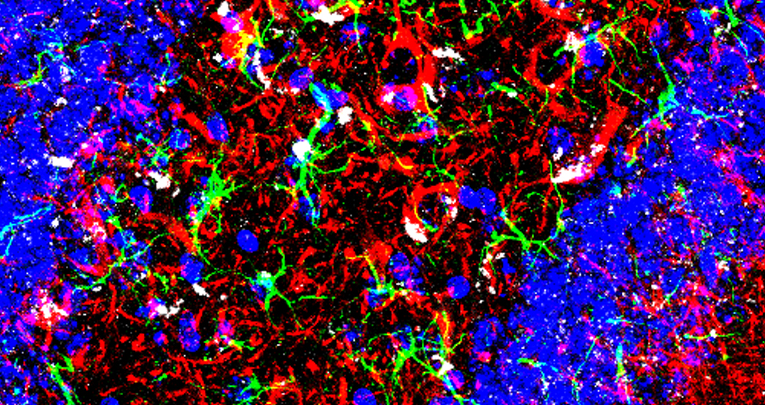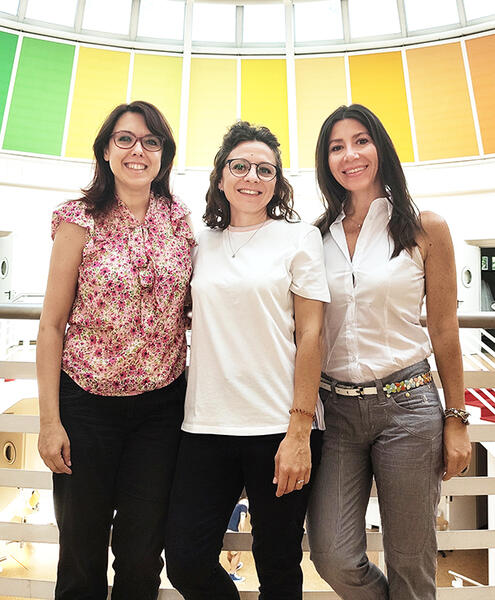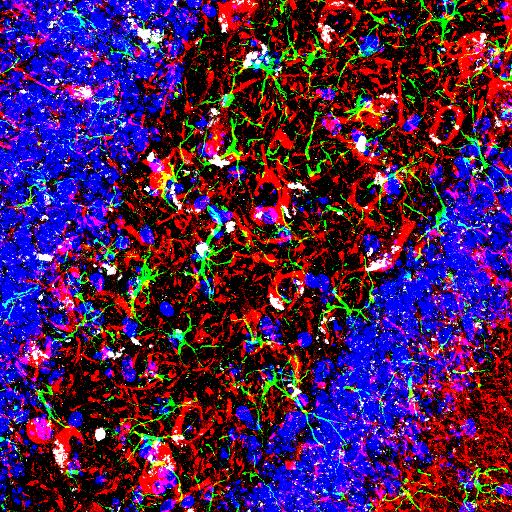
Scientific Reports , 9 July 2022
Activation of the Hepcidin-Ferroportin1 pathway in the brain and astrocytic–neuronal crosstalk to counteract iron dyshomeostasis during aging.
Open Access
Mariarosa Mezzanotte 1 , Giorgia Ammirata 1,3 , Marina Boido 2 , Serena Stanga 2, * , Antonella Roetto 1, *
Research Group NICO of Brain Development and Disease
From the left, NICO researchers: Marina Boido, Mariarosa Mezzanotte e Serena Stanga.
During physiological aging, iron accumulates in the brain with a preferential distribution in regions that are more vulnerable to age-dependent neurodegeneration such as the cerebral cortex and hippocampus. In the brain of aged wild-type mice, alteration of the Brain Blood Barrier integrity, together with a marked inflammatory and oxidative state lead to increased permeability and deregulation of brain-iron homeostasis.
Accumulation of the iron storage protein, Ferritin-L (Ft-L) marked in white, within hippocampal neurons marked in red.
In this context, we found that iron accumulation drives Hepcidin upregulation in the brain and the inhibition of the iron exporter Ferroportin1. We also observed the transcription and the increase of NCOA4 levels in the aged brain together with the increase of light-chain enriched ferritin heteropolymers, more efficient as iron chelators.
Interestingly, in cerebral cortex and hippocampus, Ferroportin1 is mainly expressed by astrocytes, while the iron storage protein ferritin light-chain by neurons. This differential distribution suggests that astrocytes mediate iron shuttling in the nervous tissue and that neurons are unable to metabolize it.
Our findings highlight for the first time that Hepcidin/Ferroportin1 axis and NCOA4 are directly involved in iron metabolism in mice brain during physiological aging as a response to a higher brain iron influx.
read more
Graphical abstract
Iron regulation in the brain during aging. Schematic representation illustrating iron metabolism in old mice brains vs adults (see text for details). Fe: iron; Hepc: Hepcidin; Fpn1: Ferroportin 1; Ft-L: Ferritin-L; Ctx: cerebral cortex; Hip: hippocampus.
1
Department of Clinical and Biological Sciences, University of Turin, Turin, Italy.
2
Neuroscience Institute CavalieriOttolenghi, Department of Neuroscience Rita Levi Montalcini, University of Turin, Turin, Italy.
3
Present address: Molecular Biotechnology Center Guido Tarone, University of Turin, Turin, Italy.
** These authors contributed equally: Serena Stanga and Antonella Roetto.










